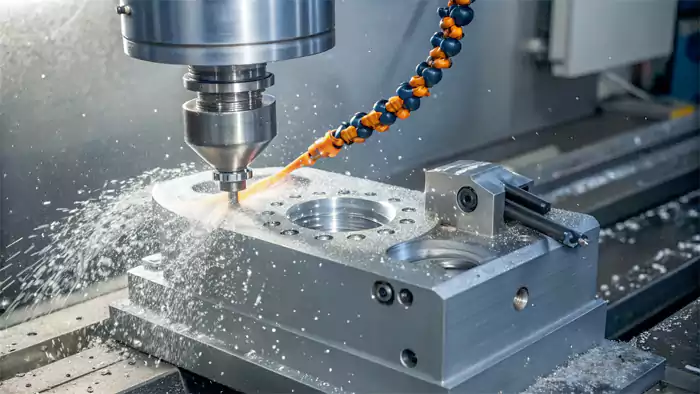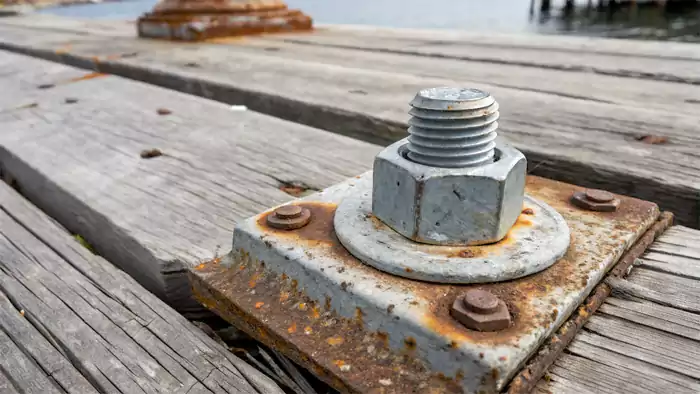Editor's Note: Last updated on 2025-10-20 15:16:25 Monday
Working with metals in marine environments is challenging. Salt water corrodes most metals quickly, leading to expensive repairs and safety risks. I've seen countless metal components fail prematurely when the wrong material was chosen.
For marine applications, the best marine-grade metals are 316/316L stainless steel, titanium alloys, and marine-grade aluminum like 5052 and 6061. These metals offer excellent corrosion resistance against saltwater exposure through their protective oxide layers.
Having worked extensively with various metals in marine environments1, I've learned firsthand what works and what doesn't. Let's explore the key options and their performance characteristics to help you make the right choice for your application.
What Makes Stainless Steel 316 the Best Marine Grade Metal?
Many boat owners learn the hard way that regular steel corrodes quickly in marine environments. After seeing countless rusted components, I can confidently say 316 stainless is worth the investment.
316 stainless steel contains 2-3% molybdenum, which creates an extremely stable passive layer that resists chloride attack from saltwater.

This grade offers superior corrosion resistance compared to 304 stainless and can last decades with proper maintenance.
When it comes to marine-grade stainless steel, understanding the differences between grades is crucial. Here's a detailed breakdown of why 316 excels:
Key Advantages of 316 Stainless Steel2
- Higher molybdenum content (2-3%) vs. 304 (0%)
- Better pitting resistance3
- Superior chloride resistance4
- Excellent weldability
- Good strength-to-weight ratio
The additional molybdenum in 3165 creates a more stable passive layer that better resists chloride attack. While it costs about 20% more than 304, the longer service life in marine environments makes it more economical long-term. I've seen 316 components last 15+ years in saltwater exposure while similar 304 parts needed replacement within 5 years.
Real-World Application: Offshore Instrument Housing
Here's a case from our recent work that demonstrates marine material selection in practice:
We recently manufactured sensor housings for an offshore environmental monitoring system. The design engineer needed components that could withstand continuous saltwater immersion while protecting sensitive electronic equipment.
Project Requirements:
- Operating Environment: Continuous saltwater immersion, 3-year deployment
- Temperature Range: 28°F to 95°F (-2°C to 35°C)
- Pressure Rating: 150 PSI maximum operating depth
- Maintenance: Zero maintenance access during deployment
- Cost Target: Under $500 per housing unit
Material Selection Process:
The procurement manager initially specified 304 stainless steel due to budget constraints. However, our engineering team recommended 316L stainless steel based on the continuous saltwater exposure requirement.
Performance Comparison Data:
| Material | 304 Stainless Steel | 316L Stainless Steel | Marine Aluminum 5052 |
|---|---|---|---|
| Pitting Resistance | 35°C max in seawater | 45°C max in seawater | 25°C max in seawater |
| Crevice Corrosion | 25°C max | 35°C max | 20°C max |
| Tensile Strength | 515 MPa | 515 MPa | 193 MPa |
| Material Cost/Unit | $185 | $222 | $165 |
| Projected Service Life | 3-5 years | 8-12 years | 4-6 years |
Final Production Results:
- Material Selected: 316L stainless steel with electropolished finish
- Manufacturing Process: 5-axis CNC machining with specialized tooling
- Critical Features: All sealing surfaces held to 32 μin Ra finish
- Corrosion Performance: Passed 2000-hour salt spray testing (ASTM B117)
- Total Project Cost: $238 per unit - within budget with superior performance
"The 316L housings have been deployed for 18 months with zero corrosion issues. The initial higher material cost was justified by eliminating the need for early replacement and maintenance." - Marine Systems Engineer
Need marine-grade components that withstand saltwater exposure? Contact our marine engineering team for material selection guidance and corrosion-resistant manufacturing solutions.
Can Aluminum Be Used in Ocean Environments?
After seeing aluminum components corrode rapidly on boats, many assume it's not suitable for marine use. However, certain aluminum alloys perform exceptionally well when properly selected and maintained.
Marine-grade aluminum alloys like 5052 and 6061 contain specific elements that form a protective oxide layer, making them highly resistant to saltwater corrosion when properly treated and maintained.

Having worked with various aluminum grades in marine applications, I've found success depends heavily on choosing the right alloy and protection method:
Marine-Grade Aluminum Considerations
Top Performing Alloys:
- 5052: Best corrosion resistance
- 6061: Good strength and corrosion resistance
- 5083: Excellent for welded structures
- 5086: Superior strength in marine environments
The key is proper surface treatment. Anodizing creates a thick, protective oxide layer that significantly enhances corrosion resistance. Additionally, regular freshwater rinsing and maintenance is essential for long-term durability. I always recommend using isolation materials when joining different metals to prevent galvanic corrosion6.
Is Galvanized Steel Truly Marine Grade?
Many manufacturers market galvanized steel as marine-grade, but my experience shows it's not ideal for long-term saltwater exposure. While cheaper initially, it often leads to costly replacements.
Hot-dip galvanized steel offers temporary protection but eventually fails in marine environments as the zinc coating breaks down. It's suitable for occasional saltwater exposure but not permanent marine installations.

The performance of galvanized steel7 in marine environments depends on several factors:
Galvanized Steel Performance Factors
Environmental Conditions:
- Saltwater exposure frequency
- Temperature variations
- UV exposure
- Water movement
Coating Specifications:
- Zinc coating thickness
- Surface preparation quality
- Application method
- Maintenance schedule
Based on my observations, galvanized steel typically lasts 5-7 years in marine environments before requiring replacement. The zinc coating gradually sacrifices itself to protect the base steel, making it a temporary solution at best. For permanent marine installations, I strongly recommend upgrading to 316 stainless steel or marine-grade aluminum instead.
Marine Material Selection Guide from 20 Years of Experience
Here's the decision framework I've developed after two decades of marine manufacturing:
For Critical Components (Continuous Saltwater Exposure):
- Primary Choice: 316/316L stainless steel
- Alternative: Titanium Grade 2 or 5
- Budget Option: Marine aluminum 5052 with hard anodizing
- Avoid: Galvanized steel, 304 stainless, carbon steel
For Above-Water Marine Applications:
- Primary Choice: Marine aluminum 6061 with powder coating
- Alternative: 316 stainless steel
- Budget Option: Hot-dip galvanized steel with marine-grade paint
- Maintenance: Annual inspection and touch-up painting
Key Installation Considerations:
- Always use dielectric insulation between dissimilar metals
- Specify marine-grade fasteners (316 stainless or silicon bronze)
- Design for proper drainage and ventilation
- Include sacrificial anodes for submerged components
- Plan for regular freshwater rinsing access
"The right material choice can mean the difference between a component that lasts 3 years versus 30 years in marine service. Never compromise on corrosion protection for critical marine applications." - Senior Marine Engineer
Conclusion
For marine applications, 316 stainless steel offers the best long-term performance, followed by marine-grade aluminum alloys. While galvanized steel can work for temporary uses, it's not ideal for permanent marine installations.
Footnotes:
-
Understanding the best materials for marine environments can significantly enhance the durability and performance of your projects. ↩
-
Explore the advantages of 316 Stainless Steel, especially its durability and resistance in harsh environments, to make informed material choices. ↩
-
Understanding pitting resistance is crucial for selecting materials that withstand corrosive environments, ensuring longevity and reliability. ↩
-
Chloride resistance is vital for applications in marine and chemical environments; learn more to ensure your materials perform optimally. ↩
-
Understanding the role of molybdenum can help you appreciate its benefits in corrosion resistance and longevity in marine applications. ↩
-
Preventing galvanic corrosion is essential for the longevity of metal structures. Learn effective strategies to avoid this issue. ↩
-
Explore the advantages of galvanized steel in marine settings, including its protective qualities and longevity. ↩


Okay, so I downloaded stargameapk. Kinda cool if you’re on the go and want something to play on your phone. Not gonna lie, it’s pretty addictive. Check out stargameapk if you’re looking for some mobile gaming fun.